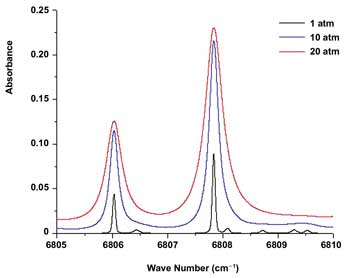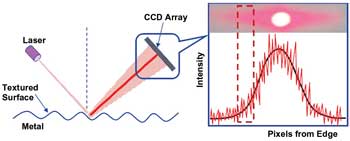Chayan Mitra, GE Global Research Centre - Bangalore
The power generation industry has to focus on several key factors to make its future
products successful in the electrical power generation market. These factors include:
Higher machine efficiency and optimized life cycle cost; Reliable operation of machinery during repeated startups and shutdowns; Maintenance and health management of the plants;
Ability to meet regulatory emissions standards; Fuel flexibility.
Gas turbine
performance is highly dependent on the turbine entry temperature; typically, higher
combustion and firing temperatures lead to higher thermal efficiencies. The blades
and vanes operate under extreme conditions: in an oxidizing environment and under
large thermal and mechanical stresses. To optimize the life cycle cost of gas turbines
and establish service agreements, monitoring the hot gas path components is especially
important.
For a combined-cycle unit, improving plant flexibility without
compromising service life or efficiency is the new requirement for the power market.
This in turn has resulted in the demand for quicker plant startups. During plant
startups, the most critical components in heat recovery steam generators and turbines
are the high-pressure ones, as they are exposed to large temperature gradients.
Temperature measurement is one of the most common parameters used
for monitoring and controlling power plant operations. The controls generally used
in power plants are thermocouples and resistance temperature detectors, but currently
the trend is to shift from contact to noncontact temperature measurement. This provides
the power plant operator and machine manufacturers the ability to monitor critical
components remotely, offering flexibility in operations.
Gas temperature
One major challenge for gas turbines operating at high combustion
temperature is emission of pollutants, which depends on machine operating conditions
and fuel composition. It is well known that production of nitrogen oxide increases
exponentially as flame temperature goes up. But the nitrogen oxide and carbon monoxide
emissions follow opposite trends, leading to a trade-off in the combustion process.
To lower nitrogen oxide emission, the firing temperature is sometimes lowered, which
for a dynamic pressure variation results in flameout. As a result, the plant control
system will have to monitor the occurrence of combustion instabilities and provide
the information to a controller. For the combustion process, noninvasive time-varying
gas temperature and pressure measurements are critical factors in deciding its stability.
Tunable diode laser absorption-based gas temperature measurement
has been reported in several articles.1 The presence of water vapor as a major product
of combustion and the commercial availability of high-quality tunable diode lasers
have led to the development of laser absorption-based sensors for practical combustion
environments.
The success of this technique for temperature sensing relies on
selection of two transition lines of water vapor whose line strength ratio is a
sensitive and monotonic function of temperature. It has become standard to use the
HITRAN database2 as a reference for selecting the lines, but combustion environments
in gas turbines provide a bigger challenge for implementation of this technique.
The time-varying high pressures broaden transition lines, merging them with their
neighbors (see Figure 1).

Figure 1. An illustration of pressure-dependent line broadening of water vapor transitions (selected from HITRAN database). Images courtesy of Chayan Mitra.
This leads to spectrum complications and uncertainties in temperature
measurement. Another challenge due to rapidly changing pressures is having a sensor
with high bandwidth. An improvement over direct absorption spectroscopy –
using wavelength modulation spectroscopy with second-harmonic detection, WMS-2f
– has been developed.1
Metal surface temperature
In the semiconductor industry, several techniques, such as infrared
thermocouple, photothermal, interference thermometry and thermoreflectance, have
been used extensively for noncontact and remote measurement of substrate temperature.
Most of these rely on a sophisticated optical system, but the long-term accuracy
and linearity of these devices at a high temperature is unknown. It has been reported
in several articles that these devices are mostly linear in short temperature ranges,
and that nonlinearity increases as they approach higher temperatures.3
Techniques such as slip-ring thermocouples are often used to
measure temperatures of rotating machinery parts. Ultrahigh-speed slip rings with
continuous silver connections also have been developed for temperature measurement
with minimal thermal error. In this case, the slip rings are mounted at the hot
part of the machine. But issues related to moisture ingress in the slip ring compromise
the performance of the slip-ring-based thermocouples – and their suitability
for application in the steamy environment of steam turbines.
To overcome the above-mentioned challenges, researchers at GE
developed an optical reflectance-based noncontact temperature measurement technique
for metal surfaces.4-6 This method uses the reflective properties of metal, which
depend on the metal’s plasma frequency, incident light frequency, angle of
incident light and the relaxation time of electrons in the metal. However, a metal
surface exposed to harsh conditions is expected to have high nonuniformities. To
mitigate the surface roughness effect, the “speckle pattern” emanating
from surface irregularities of the metal was used to determine the temperature.
In this case, a HeNe diode laser was incident on a corroded and
textured metal surface (this is usually the case when the components of a steam
turbine are exposed to harsh conditions for a prolonged period of operation), and
the reflected beam has been investigated using a CCD camera (Figure 2).

Figure 2. Intensity distribution as a result of scattering and diffraction from a corrugated metal surface, as recorded by a CCD camera.
Access and implementation
Unfortunately, using laser-based sensors often means paying the
price of severe spatial constraints and optical access limitations. Some practical
problems that must be addressed during their implementation include maintenance
of line of sight during the measurement process, and obscuration or clogging of
light-collecting fibers (or windows) due to soot deposition.
The availability of high-temperature single- and multimode fibers
has enabled the development of high-temperature fiber optic probes with sapphire
lenses at the tip for collimation in a “pitch” probe and focusing in
a “catch” probe. The probes are stainless steel and jacketed with threading
at the tip to minimize vibration-related misalignments of the “pitch”
and “catch” optics. Clogging of the optical windows from soot directly
affects the measurement techniques, as they rely on absolute values of light intensity.
In this case, a wavelength separate from the probing wavelength is used to track
the transmission loss and to incorporate it as a correction factor.7,8
To minimize the implementation challenges, a single-window approach,
with the “pitch” and the “catch” optics lying together,
is generally preferable. In this case, the beam is reflected off the metal shaft
in the combustion zone.
Active performance estimation and life prediction are some of
the major requirements for power plant owners. The sensor systems needed to address
these should address features such as precision and bandwidth, system integrity
at high temperature, immunity to vibration and clogging of optical windows, and
reduced false alarms.
Laser-based sensors hold a definite edge over other sensors as
power plant operators prefer to have noninvasive control strategies for future machines.
Meet the author
Chayan Mitra is a senior scientist in the Micro- and Nano-Structures
Technologies Lab at the GE Global Research Centre in Bangalore, India.
References
1. J.T.C. Liu, “Near-infrared diode laser absorption diagnostics
for temperature and species in engines,” TSD Report 2004, Stanford University.
2. L.S. Rothman et al (November 2003). The HITRAN spectroscopic
database. J Quant Spec Rad Transfer, pp. 5-44.
3. Omega technical reference series, “Non-contact temperature
measurement,” Transactions in Measurement and Control, Vol. 1, 2nd edition.
4. C. Mitra et al (May 2010). An optical method for measuring
metal surface temperature in harsh environment conditions. Proc SPIE, pp. 772619-8.
5. S. Maity et al (August 2010). Temperature dependence of reflectance
of metals at visible wavelengths. Proc SPIE, pp. 77920D-7.
6. C. Mitra et al, US2010/0047058 A1.
7. C. Mitra et al, US2009/0101822 A1.
8. C. Mitra et al, US7345280 B2.